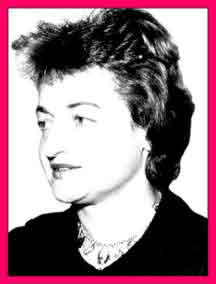Women in the 60's

Betty Friedan
The role of women in American society changed dramatically in the 1960s. At the beginning of the decade, women were portrayed on television and in advertisements as happy homemakers, secretaries, teachers, and nurses. Women who did not get married were depicted as unattractive, unfortunate spinsters, and those who asserted themselves were dismissed as nagging shrews. Women were to strive for beauty, elegance, marriage, children, and a well-run home. Meanwhile, popular culture ignored the fact that all women did not fit the mold that tradition had proscribed for them.
One of the major events that contributed to the change in women's roles in society was the introduction of Enovid, the first birth control pill, in 1960. With the increasingly widespread use of birth control, women gained greater control over when and if they would have children, allowing many women to enter the workforce who would have otherwise been busy rearing children. Many were challenged by Betty Friedan's 1963 book, The Feminine Mystique , which described the frustration of many women who were unfulfilled by their efforts to conform to society's ideal of femininity, living for their husbands and children, and neglecting their own ambitions and dreams. According to Friedan, "the feminine mystique has succeeded in burying millions of American women alive." In a call to action, she urged women to "break out of the household trap and truly find fulfillment as wives and mothers—by fulfilling their own unique possibilities as separate human beings." In 1963, the President's Commission on the Status of Women issued a report entitled American Women, which recommended that women be granted equality in employment and educational opportunities, as well as wages. The report suggested that special support be given for working mothers, including government-assisted day-care centers and government-required maternity leave. In the same year, Congress passed the Equal Pay Act, the first federal law against gender discrimination. Women's legal rights were further promoted by the Civil Rights Act of 1964, which banned employment discrimination on the basis on gender, as well as race, color, religion, and national origin. The law also established the Equal Employment Opportunity Commission, which would enforce the law, as well other later anti-discriminatory legislation.Women took an active role in politics in greater numbers. Many individuals, such as Fanny Lou Hamer and Joan Baez, made tremendous efforts as individuals and as part of larger civil rights groups. In addition, organizations like Women Strike for Peace, founded in 1960 by Bella Abzug and Dagmar Wilson, and the National Organization for Women, NOW, founded in 1966 by Betty Friedan, brought women together to influence political and social policy. In addition to protests for equal rights for black Americans and anti-war demonstrations, women worked toward gains in women's rights. One major issue was the Equal Rights Amendment, or the ERA. Beginning in 1967, NOW members worked hard to help get the ERA passed, but they were ultimately unsuccessful in their efforts to get the amendment ratified.
As the role of women in American society evolved during the 1960s, the images of women in the media and popular culture began to reflect those changes. Television shows still largely featured stereotyped female characters, but movies began to portray women who did not fit into the traditional molds. Fashions among young women changed from neat, well-pressed outfits to casual tie-dyed shirts and jeans. Women growing up in the 1960s saw a number of women playing important roles outside the home, in business, politics, the media, and other influential sectors. The achievements of women in the arts, sciences, and humanities were also increasingly apparent. Although popular culture had yet to embrace the idea of the "modern liberated woman," America became more open to a broader view of women's roles in society.
 >
>